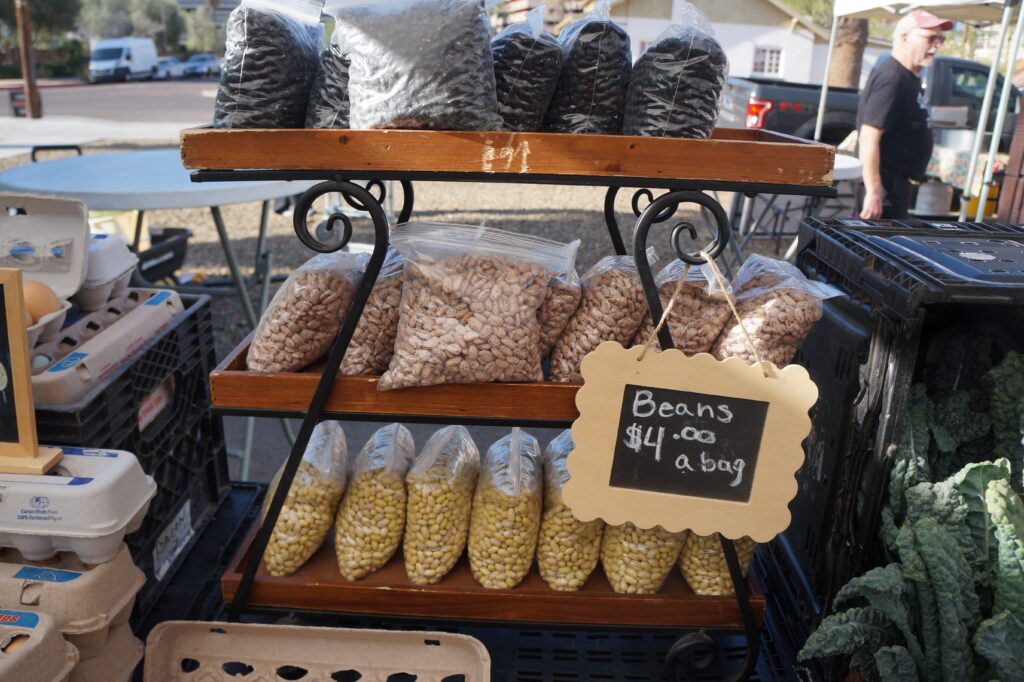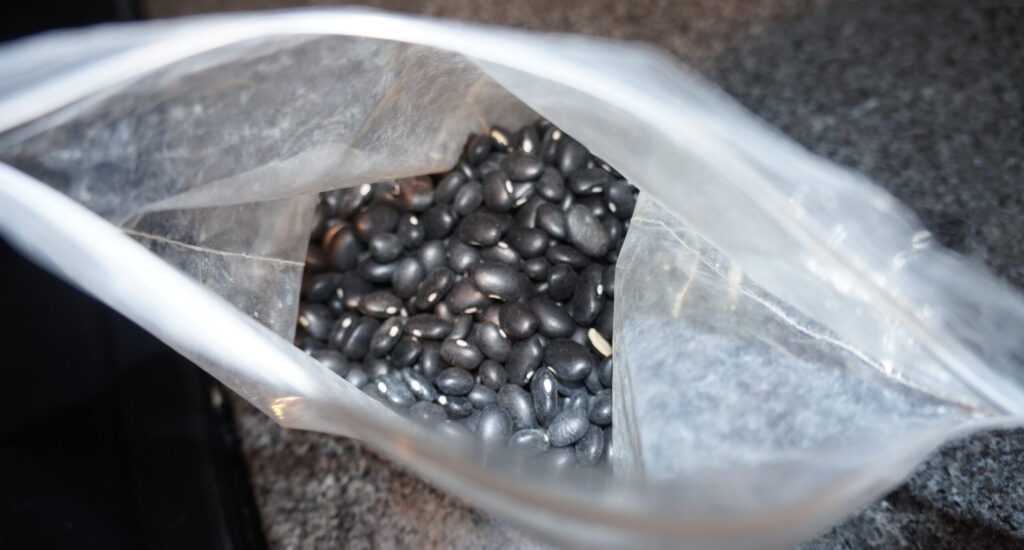A Dry Beans How To
Ever since I started cooking dry beans for myself, canned beans do not taste the same. I’m not going to lie, I do love how effortless it is to cook up some beans from the can in a few minutes, but it is so worth it to cook them from dry. When it comes to the price, taste, and texture of beans, they are definitely the way to go. Another great plus is you can support your local farmers by purchasing the beans they grow right here in Arizona. The process may at first seem time consuming, but it is quite hands off and you can always store any extra in the fridge or freezer!
I decided to grab a bag of black beans from Crooked Sky Farms over the weekend and cooked some up to make homemade black bean burgers. See my recipe for black burgers here: Homemade Black Bean Burgers


Should you soak dry beans?
Most dry beans will benefit from soaking them in water for 8 hours or overnight. This step is not necessary, but it will help speed up the cooking process of the beans and make them easier to digest. To soak your beans, simply place them in a bowl with 2-3 inches of water covering them and discard any that float to the top. In the morning or after 8 hours, drain and rinse the soaked beans.
If the beans are not soaked, just make sure to rinse them in a strainer to remove any debris before the cooking process.
exceptions from soaking: lentils, split peas, adzuki beans
- these beans do not need to be soaked over night and have fast cooking times.
The cooking process

Transfer the beans, soaked or not, to a large pot and cover them with 2-3 inches of water. Bring the water to a boil, then reduce the heat to a simmer. Depending on the type of bean and if they were soaked or not, the cooking time will vary. Most beans take 30 minutes, but some can take up to 2 hours or more. Black beans are on the longer cooking time side and usually take about 2 hours to completely cook without being soaked.
As the beans are at a simmer, stir occasionally and remove any foam that rises to the top. If the beans begin to look dry, add more water to the pot so that there is always 2 inches of water covering them.
Check on the beans every 30 minutes or so to see if they are hardy on the outside but soft on the inside. I like to try a couple of beans at a time to see how they are doing, but you can also mash them against the side of the pot in order to check their firmness.
Once the beans are at the right texture, remove them from the heat and let them cool down to room temperature. Then, the beans are ready to be enjoyed!
Seasoning your beans
I always add salt to the water of the beans before the cooking process, but there are many other creative and flavorful ways to season them.
You can always season the beans with herbs and other spices, but my favorite and most sustainable way to season them is to use vegetable scraps. These can range from onion ends, carrot and scallion tops, celery leaves, and more! Next time you are cutting any of these aromatic vegetables, save their scraps in the freezer: you can place these right in the pot while they are cooking. At the end of cooking, make sure to discard any scraps or herbs used.
- This method helps boost not only the flavor of the beans; it also helps reduce the amount of food waste you are creating by putting the food scraps to good use, and will save you money on herbs and spices.
Storing your cooked beans
Cooked beans can be stored in their cooking liquid in an airtight contained in the fridge for up to a week. You can easily reheat them in the microwave or on low on the stove.
If you make the beans in bulk like I do, you can always store them in the freezer. I typically let them defrost for a couple minutes and reheat them on low on the stove.
Next time you are at the market, grab a bag of dry beans at Crooked Sky Farms and taste the difference for yourself!
Posted in Agriculture, All Recipes, Chef, Community, Double Up Food Bucks, Downtown Phoenix, Gardening, Health & Wellness, Local, Loyal Local, Market Life, Recipe, Recipe Box, Summer, Sustainability, Taste of the Market, Uncategorized, Vegan, Vendor Feature, Vendors